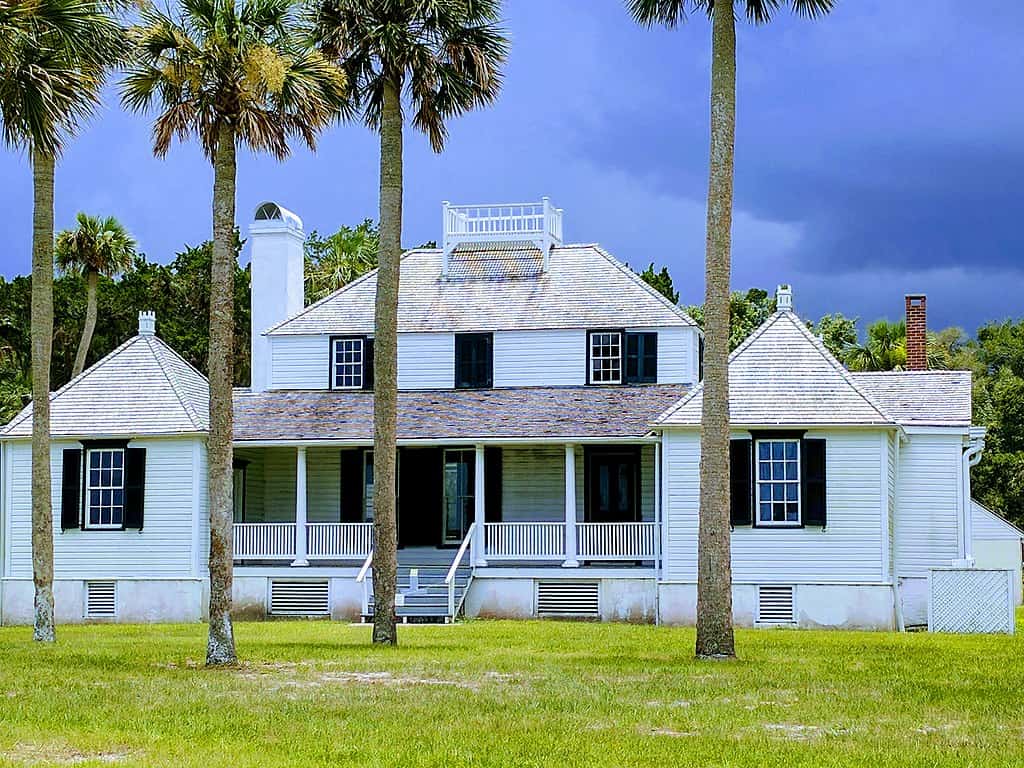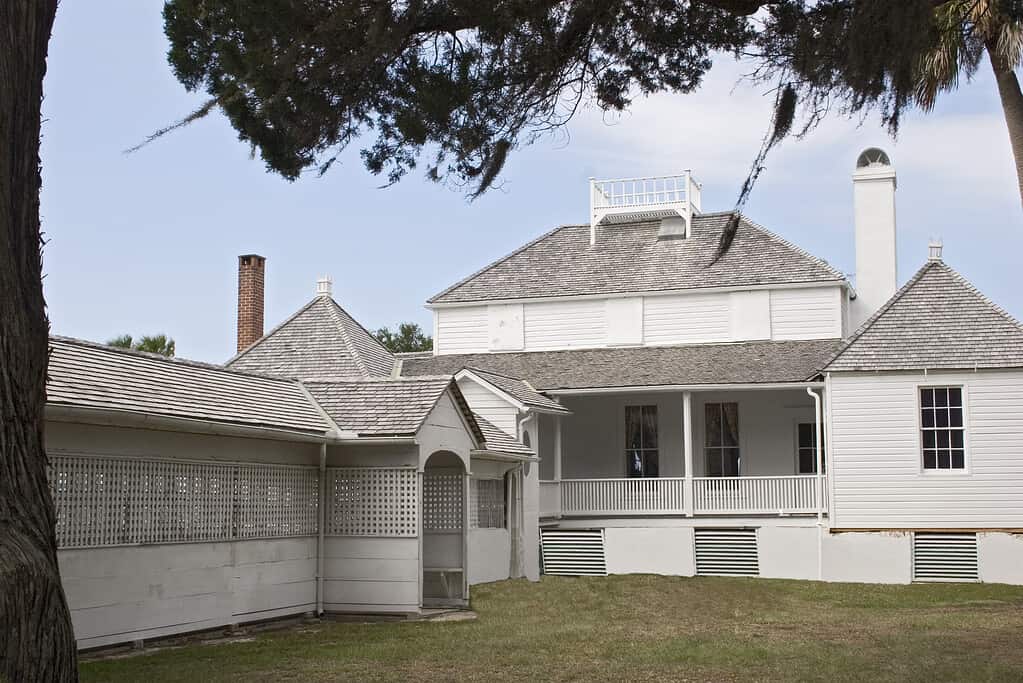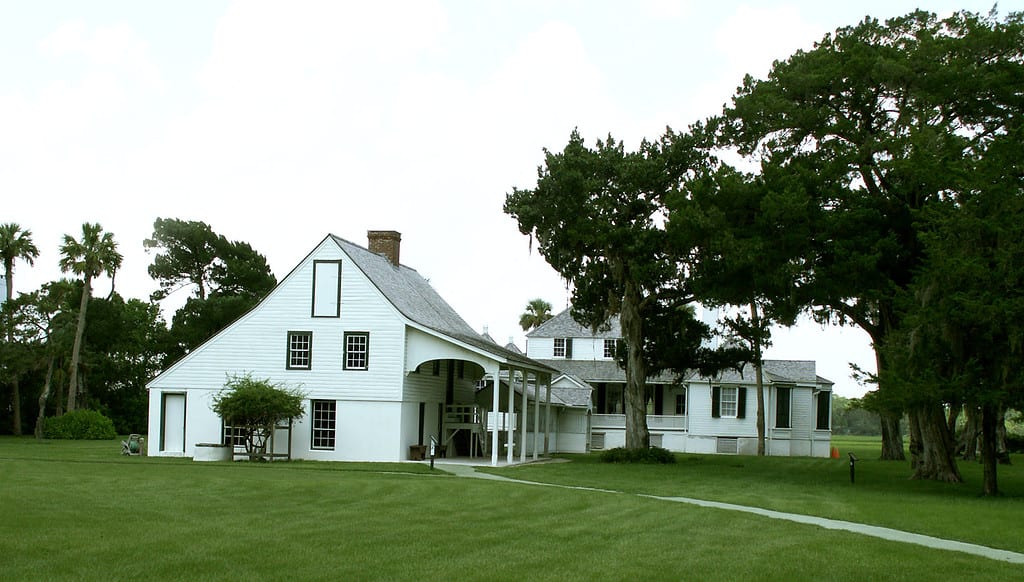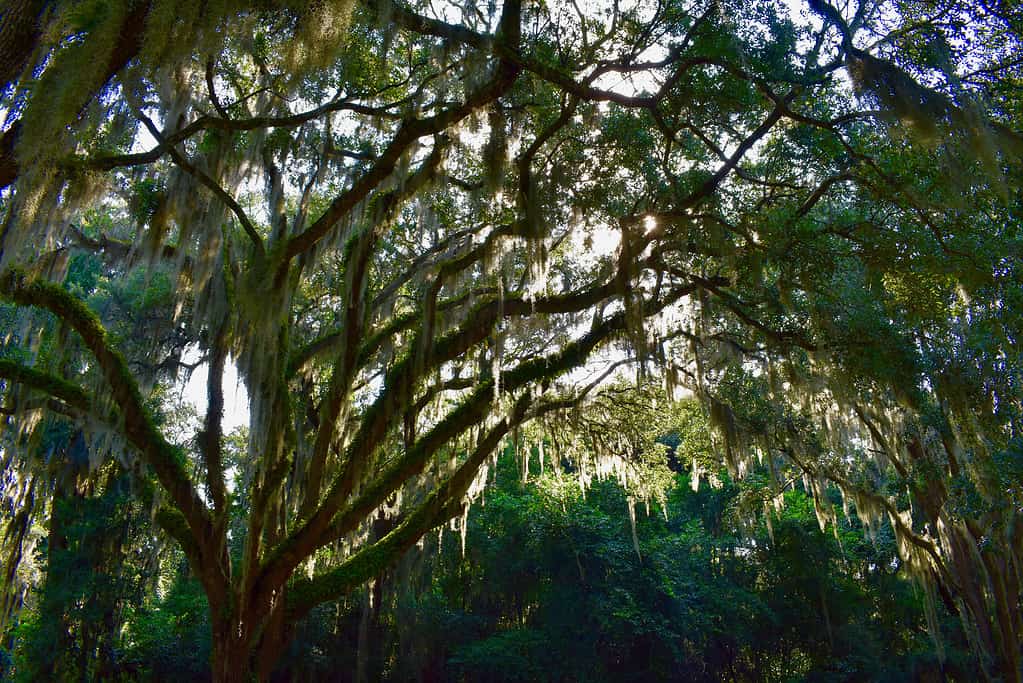Discover the Largest Plantation in Florida
Remnants of pre-Civil War plantations can be found all throughout the Southern United States. The largest remaining plantation in Florida is Kingsley Plantation, which is located outside of Jacksonville in North Florida. Kingsley Plantation stands as a testament to America’s complex history of slavery and plantation life. This historic site, which is now part of the National Park Service’s Timucuan Ecological and Historic Preserve, offers visitors an opportunity to explore its well-preserved structures and gain valuable historical insights into an era of the past.

©Shrickus / CC BY-SA 4.0 – License
Who Was Zephaniah Kingsley?
To understand the history of Kingsley Plantation, let’s learn about the owner Zephaniah Kingsley as well as his wife Anna Jai Kingsley. Anna Jai was a princess from present-day Senegal in West Africa. She was sold into the slave trade in Havana, Cuba, where Kingsley purchased her in 1806. By 1811, at the age of 18, Anna had three children by Zephaniah.
At this time, Florida remained under the control of the Spanish colonial government. In 1811, years prior to the purchase of the plantation, Kingsley freed Anna and their children. Albeit unusual for a master to free his slaves, it did happen from time to time. In a legal emancipation letter to the Spanish colonial government declaring their freedom, Kingsley writes this:
“Let it be known that I … possessed as a slave a black woman called Anna, around eighteen years of age, bought in the port of Havana from a slave cargo, who with the permission of the government was introduced here; the said black woman has given birth to three mulatto children: George, about 3 years 9 months, Martha, 20 months old, an Mary, one month old. And regarding the good qualities shown by the said black woman, the nicety and fidelity which she has shown me, and for other reasons, I have resolved to set her free … and the same to her three children“
Kingsley Moves to the Plantation — 1814
In 1814, Kingsley and Anna were settled in Laurel Grove, also in North Florida. A terrible fire ravaged Laurel Grove, forcing the Kingsley operation to relocate. This is how he came to find the plantation on the banks of the St. Johns River. This lush property was nearly 750 acres, which was used for an array of activities, including the cultivation of cotton, sugarcane, and citrus fruits. The property included the main two-story plantation house.
While Kingsley did not legally marry Anna, a practice that was forbidden, he did treat her as his partner. Anna was seen as the matriarch of the plantation and therefore she played an integral role in the day-to-day operations. She was in charge of food preparation for the plantation, as well as the training of slaves. Additionally, she raised their four children.
Kingsley, the Slave Trader
Kingsley’s plantations were used to cultivate the popular cash crops of the time; however, his primary business was training and selling slaves. Kingsley had a fleet of slave schooners, which brought the slaves to the Florida territory. Kingsley’s slaves were taught English and agricultural skills, which increased the price that he could sell them.
Even though Kingsley was profiting off slaves and the trade, he would allow his slaves to have free time after their daily tasks were done. In addition, he granted his slaves time off to prepare their personal gardens and crops. Numerous historical documents exist outlining Kingsley’s stances on slavery, which show he regarded them in a different manner than other slave traders of the time.
The Main House on Kingsley Plantation

©Chet Mitchell/iStock via Getty Images
The plantation’s main house was built in 1798 by John McQueen and was modeled after 17th-century British gentry homes. The two-story home consisted of a large central room surrounded by four one-story pavilions, which were designed to help circulate air. This innovative design allowed for better air circulation, which kept the home cool during the hot Florida summers.
The large home was built utilizing the traditional “tabby” style. Tabby is a unique construction style created by using a mix of crushed oyster shells, sand, and water. Wide porches cover the front and rear of the home, which was a standard characteristic of architectural styles of the time. Kingsley Plantation remains the oldest standing plantation house in the state of Florida.
Slave Quarters at Kingsley Plantation
©ahmet ozbek/iStock via Getty Images
Historians presume that as soon as Kingsley purchased the property, he directed the slaves to start building their quarters. These buildings were located on the opposite end of the land, nearly 1000 yards from the main house. Historical evidence shows that at least two of the houses in the slave quarters were erected by 1814.
By the 1830s, the camp had grown to over 25 small buildings. Using the same tabby construction style, these quarters were small and modest, which was a stark contrast to the grandeur of the main house. The quarters were arranged in a semi-circle, which was uncommon but further evidence of Anna’s influence. This semi-circle design would have resembled the African villages where Anna grew up and helped create a sense of community among the slaves.
Anna Kingsley’s House — The Kitchen Home
Built in 1820, next to the main house is a two-story kitchen home, which is referred to as “Ma’am Anna House.” This house was where Anna lived, the home in which she raised her children. With proximity to the main house, this property was additionally used for food preparation for the plantation.

©Moni3 / CC0 – License
Kingsley Plantation Preservation
In 1955, the State of Florida purchased Kingsley Plantation. Over a decade later in 1968, led by archeologists from the University of Florida, intense research and excavations began. These studies lasted over 13 years and discovered numerous historical artifacts showing the first recorded glimpses into African and African-American lifestyles.
The National Park Service acquired the property in 1991. After that acquisition, the plantation received designation as a National Historic Landmark, which offers unique protections. This designation ensures the preservation of its structures and the continued sharing of its history with generations to come.
Visit Kingsley Plantation
Currently, the grounds of Kingsley Plantation total 60 acres, which is a direct result of forest regrowth. In spite of its complex history, the plantation is currently a serene retreat in the middle of Fort George Island and welcomes guests daily. Easily accessible from downtown Jacksonville it is a popular destination for history enthusiasts and nature lovers.

©Lindsey Martin Webb/iStock via Getty Images
In conclusion, Kingsley Plantation offers a range of educational programs and guided tours that provide in-depth insights into its history. Visitors can explore the main house, slave quarters, and the picturesque landscape of Fort George Island.









